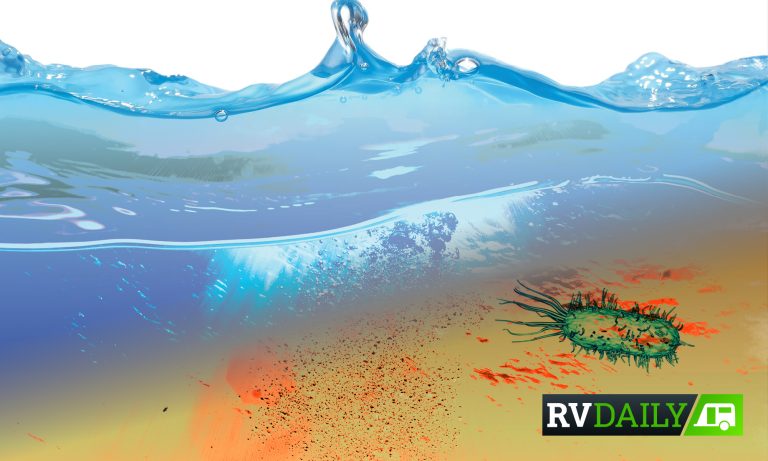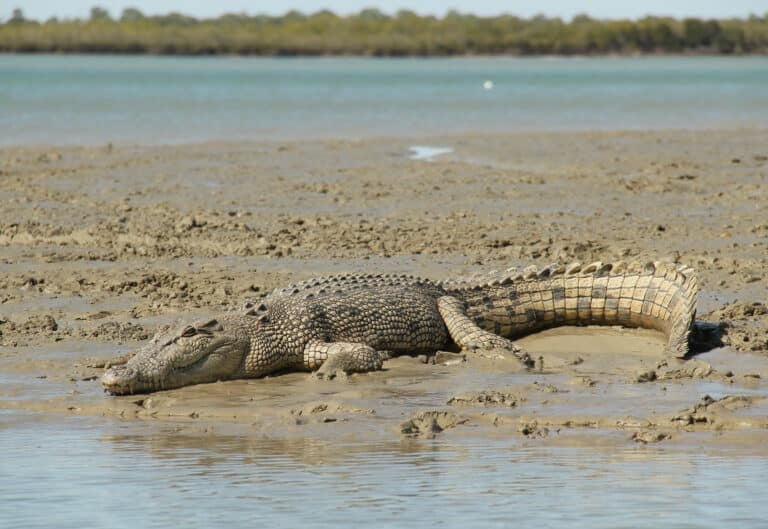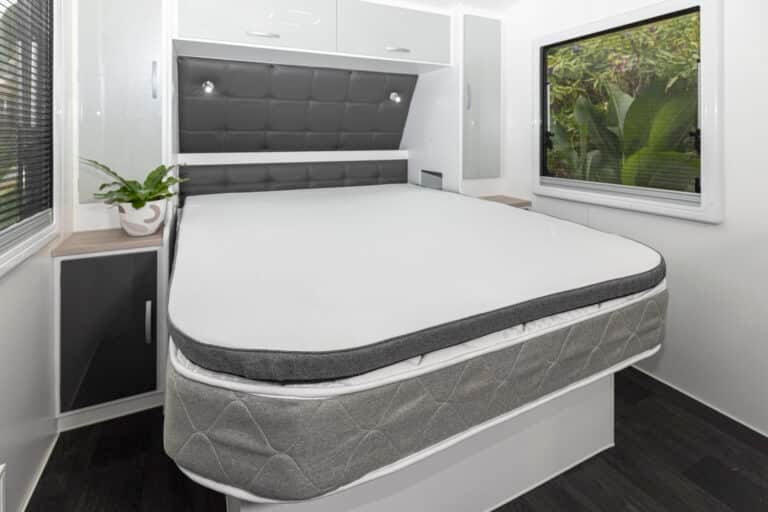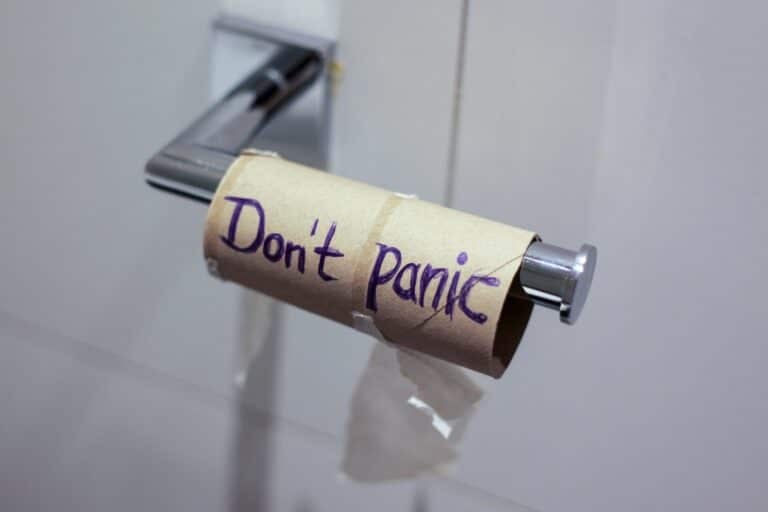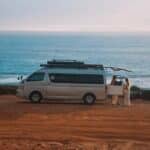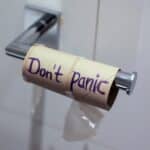Our practical guide to collecting, treating & storing potable water
Water is a balancing act for RV owners. Take too much and you’re carrying unnecessary weight; take too little and you could be refilling from undesirable sources. Here’s our practical guide to collecting and keeping potable water fresh for longer.
The source is important
There’s a logical order you should source your water from to minimise chance of contamination. Australia’s capital cities have excellent drinking water, as do many rural towns. So consider tap water unless otherwise advised before forking out a premium for bottled water, and always plan possible water sources into your itinerary so you’re not caught short.
Water may become contaminated from a range of sources, not limited to: animal droppings, dead animals, agricultural run-off, industrial waste, urban pollution such as stormwater and sewage from leaking septic tanks, during and after bushfires, floods and other extreme weather events. Therefore, it is important to understand the risk from each source.
In general, the least to most risky sources are
- Bottled spring or mains tap water
- Rainwater
- Spring
- Bore
- Running surface water (e.g. river/creek/stream)
- Standing water (e.g. lake, pond, puddle)
Fill up with the best water you can, but if you come across better water, ditch what you have and re-fill. Preference fast-flowing, visibly clear water with no algae, odour, taste or scum accumulated on the surface and always consider what’s upstream.
When carrying limited water from multiple sources, use the worst water for boiling meals or taking a shower rather than directly drinking it. Provided your transfer mechanisms (hoses/piping) and storage container are food grade and properly maintained, you’re pretty safe with mains tap water. Water other than bottled or mains tap water should be treated to reduce contamination from heavy metals and pathogens which can cause enteric (gut) illnesses, including gastroenteritis, diarrhoea and intestinal parasites.
The young, elderly and people with weakened immune systems are most at risk from drinking contaminated water.
Different treatment options
If possible, treat water before storage to reduce contamination of your tanks. If not, you may drink clean water (using an inline filter on the kitchen tap), but shower in contaminated water. That doesn’t sound appealing, does it?
In order of most to least effective, the most popular forms of treatment are
- Boiling
- Filtration
- Chemical
- UV
Let’s talk through the pros and cons of each.
Boiling
If you have the means, boiling is the most effective method for deactivating microbial contaminants such as bacteria (e.g. salmonella, E. coli), viruses (e.g. enterovirus, rotavirus, hepatitis), protozoa (e.g. Cryptosporidium, Giardia) and other parasites. This method is scalable to however much water you want to treat. At even the highest elevations in Australia, around one minute at a rolling boil is sufficient. This method isn’t compromised by the turbidity (cloudiness) of the water, but it cannot remove heavy metals, improve the appearance, smell and taste of water and does not prevent recontamination in storage. Use in combination with filtration and chemical purification for best results.
Filtration
Filtration can be used before or after boiling, or standalone. Filtration media is often carbon, ceramic or fibre and there are scalable solutions in the form of inline (drink-through straw, drink bottle style or tap), gravity/drip, squeeze or pump-through set-ups. Filters only trap microbial contaminants but don’t deactivate, and high pressure can force contaminants through filters. Filtration is the only reliable method of removing some heavy metals. Filters have a limited lifespan; therefore, it is important to follow the manufacturer’s instructions for maintenance and replacement. With all filters the finer the pore size, the more effective the filtration. Microfiltration (0.2-0.4μm) is suitable for most bacteria, protozoans and other parasites, but won’t reliably trap most viruses. Ultrafiltration (0.01μm) is recommended for filtering out viruses.
Filtration often improves the appearance, smell and taste of water but does not prevent recontamination in storage. Use in combination with boiling and chemical purification for best results.
Chemical
Chemical purification is popular due to its small size (liquid or tablet), ease-of-use and some ongoing protection from recontamination in storage. There are various chemicals available including halogens chlorine and iodine, and salts such as troclosene sodium, and different strengths depending on the risk of the source. Some chemicals work better against specific microbial contaminants than others, but chemical purification won’t remove heavy metals. Water must have low turbidity (filtering first is preferable), the correct pH, concentration and contact time. Dosing is flexible depending on the quantity of water being treated, but efficiency decreases with water temperature, and there is a wait time after treatment and a shelf life to consider. Iodine is not recommended for pregnant women, people with hypersensitivity and thyroid problems, and for periods longer than a few weeks. Chemical purification does impart odour and taste on water.
UV
Whilst UV imparts no odour or taste on water, it is the least popular and least effective method due to the difficulty of use. UV units require power and the water must be clear (pre-filtered.) Handheld units can only treat small quantities of water, won’t remove heavy metals nor improve the appearance, smell and taste of water and will not prevent recontamination in storage.
It is important to remember that all methods make water better, but not perfect, and how you store water is
very important.
Storage considerations
Storage tank size should meet your estimated usage and any size/placement/weight (measured full) restrictions for your RV. Portable storage is smaller for hand carriage, and is useful when you can’t drive your RV close to the water source. Fixed options include underbody, floor, interior and exterior tanks that sit flat or upright. Whatever you choose, have multiple containers in the event of contamination or rupture so your entire water supply isn’t compromised.
Make sure all tanks, hoses and fittings are food grade and lock or seal up hose ends and containers when not in use. When storing water, fuller is better, but completely drain and dry out tanks if not storing water. A small amount of residual moisture can become a breeding ground for microbes.
Don’t forget tank hygiene!
Water itself doesn’t spoil – contamination in water causes spoilage, therefore proper tank hygiene is vital. Follow the directions on your chosen chemicals for purification and water freshening, and these simple steps at least annually to clean out the biofilm that accumulates in your tank.
- Half-fill the tank with water, add at least half a cup of bicarb soda and some vinegar until you get the desired bubbling and swish around or go for a bumpy drive, then empty.
- Add dish soap to a half-filled tank, more swishing or bumpy driving, then rinse thoroughly.
- Household bleach or specialised cleaners work, just follow the directions. While you can use pool chlorine, it corrodes some fittings. Using the bleach method, half-fill your tank with water, and add a cup of bleach to every 50 litres. Swish vigorously or go for another bumpy drive. If possible, leave in the tank for 12-24 hours.
- Rinse out, half-fill your tank with water only and repeat until the smell and taste of bleach have disappeared.
- If you’re using the tank again immediately, refill as normal. Otherwise, completely drain and dry out your tanks. They’ll be ready for your
next adventure.
